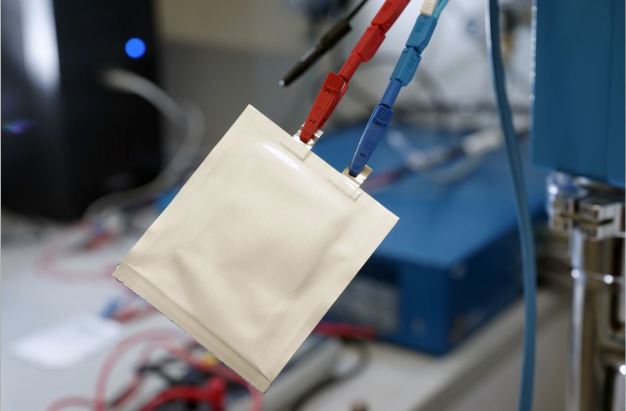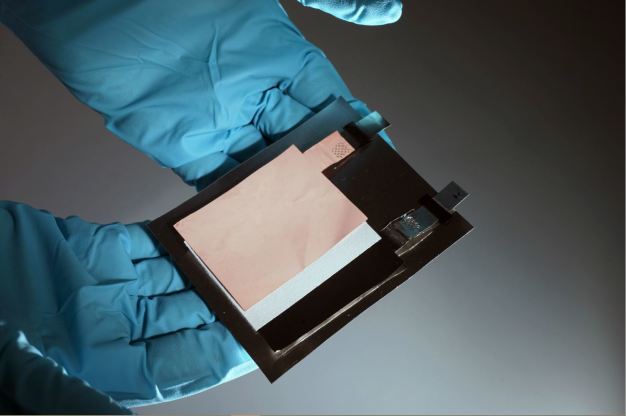Milestones in Battery and Energy Research
Climate change and rising CO2 levels on the one hand and a growing world population with increasingly scarce resources on the other are fueling the discussion about the phasing out of coal-fired power and replacement of fossil fuels. The energy revolution called for by all stakeholders is raising great expectations and posing even greater challenges. Climate pro-tection packages and a wide variety of programs to reduce CO2 emissions are being de-manded and developed by science, industry, and politics alike. Future-oriented technologies such as alternative energy extraction and novel energy storage concepts, as well as the new materials required for these, are essential prerequisites for successful implementation of the “Energie¬wende” – the energy revolution begun in Germany. In this context, great expecta-tions are placed on battery research, and electromobility is even considered the white hope. The race for time and the best concepts has begun.
Future Technologies
At present and in the near future, lithium batteries are still the ultimate high performers in mobile and stationary power supply. It was only through them that electromobility became feasible and marketable. In view of the scarcity of resources, however, alternatives are urgently needed. Since development of high-performance battery systems is an extremely complex issue, it requires interdisciplinary research strategies and networks in science and industry.
Next-Generation Batteries
Development of sustainable and environmentally sound energy storage systems is one of the major challenges of the energy revolution. Due to their outstanding energy and power densi-ties, the compact lithium ion batteries that have been used very successfully so far have a high market potential, but have become extremely cost-intensive and questionable in terms of energy required for production and the increased demand for valuable and scarce raw mate-rials such as lithium and cobalt. This is why demands for more energy-efficient, more effi-cient, more cost-effective, and more environmentally friendly alternatives are increasingly being voiced. Sodium ion batteries may offer adequate solutions in the future.
The need for research is high. “This field of research is currently experiencing a tremendous boom. In Germany, in April the German Research Foundation (DFG) established a priority program (€ 12.6 million, duration 6 years), and the EU a training network (ITN, € 4 million, duration 4 years) – I have the honor of coordinating both programs,” says Professor Dr. S. Ulrich Schubert of the Center for Energy and Environmental Chemistry Jena (CEEC Jena) at Friedrich Schiller University Jena. “The interest and investment of Evonik Industries AG likewise indicates the economic potential clearly. And there continues to be extremely strong interest from China and Japan.”
The Federal Ministry of Education and Research (BMBF) is also funding the “Transition” joint research project for more sustainable energy storage with € 1.15 million. The project involves the Helmholtz Institute Ulm (HIU) founded by the Karlsruhe Institute of Technology (KIT), the Centre for Solar Energy and Hydrogen Research Baden Württemberg (ZSW), and the Frie-drich Schiller University Jena (FSU). The aim is to develop an alternative to conventional lith-ium ion batteries. In this project, too, scientists are investigating suitable active materials and electrolytes for next-generation sodium ion batteries.
“Polymer-based batteries, i.e. batteries that use polymers as active materials for storing elec-trical energy, have been under intensive investigation in my research group since 2011,” notes Professor Schubert. “For the first time, we were now able to present a thin-film battery generated by ink-jet printing. We were also able to file patents and publish papers concerning a number of new active materials. Evonik Industries AG is currently about to commercialize these new polymers as printable inks (under the brand name of ‘TAeTTOOz’).”
The innovative batteries are required to be sustainable, environmentally friendly, and cost-effective, and to provide high performance as well. The development of novel metal-free and printable energy storage systems based on polymers opens up promising application areas in the health care sector, in sensor technology and for the Internet of Things. “This applies above all to the area of printable thin-film batteries. From active RFIT tags through ‘patches’ for transmitting health functions to intelligent clothing,” adds Professor Dr. Ulrich Schubert.
Energy Efficiency and High Performance
Batteries need to prove their reliability and performance even under the most adverse condi-tions. At the same time, potential hazards and risks in the event of faulty operation and de-struction must be eliminated throughout the entire life cycle. In addition, especially in the dis-cussion about e-mobility, the long-term operability of battery cells is in the focus of attention.
Compared to the established lithium ion batteries, new types of plastic-based batteries have numerous advantages. The production of such batteries is already much more energy-efficient due to the organic and polymer materials used. Polymers as active materials require a much smaller CO₂ footprint during production. Furthermore, they are generally less toxic and flammable. Moreover, these batteries can be processed using printing techniques (screen-printing, inkjet printing, roll-to-roll printing).
The same holds true for their application. Eventually, disposal and recycling are also more environmentally sound and much more cost-effective. Batteries with polymers as active electrode material are also more sustainable, as the use of heavy metals can be dispensed with. The prototype of a sodium ion battery, as being researched in the Transition joint project, consists on the anode side of biomass-based hard carbon in combination with aqueous binders and aluminum as current collector, and on the cathode side of transition metal oxides. In addition, improved structure-property relationships are the prerequisite for controlled electro-chemical reactions.
Electromobility
In the short and medium term, lithium ion batteries are at the heart of all electromobility, due to their performance and energy densities. They ensure operating time and range, depending on external conditions such as areas of application, temperatures and driving behavior. In the foreseeable future, sodium ion batteries will not be able to replace, but according to experts only to supplement lithium ion batteries. In the field of electromobility, water technology is also considered to have potential if various safety aspects are met.
Analysis and Characterization
Every research and development result is only as good as its process-accompanying analytics. Therefore, modern analytical methods for determination of electrolytes and identification of trace substances, raw materials, and material components are indispensable in today’s battery research. The latest instrument technologies for such measurements and material tests will be presented comprehensively over their entire spectrum at analytica in Munich. Experts are going to present the latest technologies and methods from chromatography, spectrometry, microscopy, surface and ion analysis at the world’s leading trade fair analytica. Moreover, live experiments will be carried out in the Live Lab Plastics Analysis/Polymers. Interested parties will have the opportunity to experience innovations from the fields of plas-tics and materials analysis live in a real laboratory.
At analytica in Munich from March 30 to April 03,experts will learn about the most important innovations in the industry. Expert knowledge and innovative analysis technologies represent enormous added value for research into new battery systems. In Munich, relevant key tech-nologies allow a look into the future.
Messe München GmbH
81823 München
Germany










